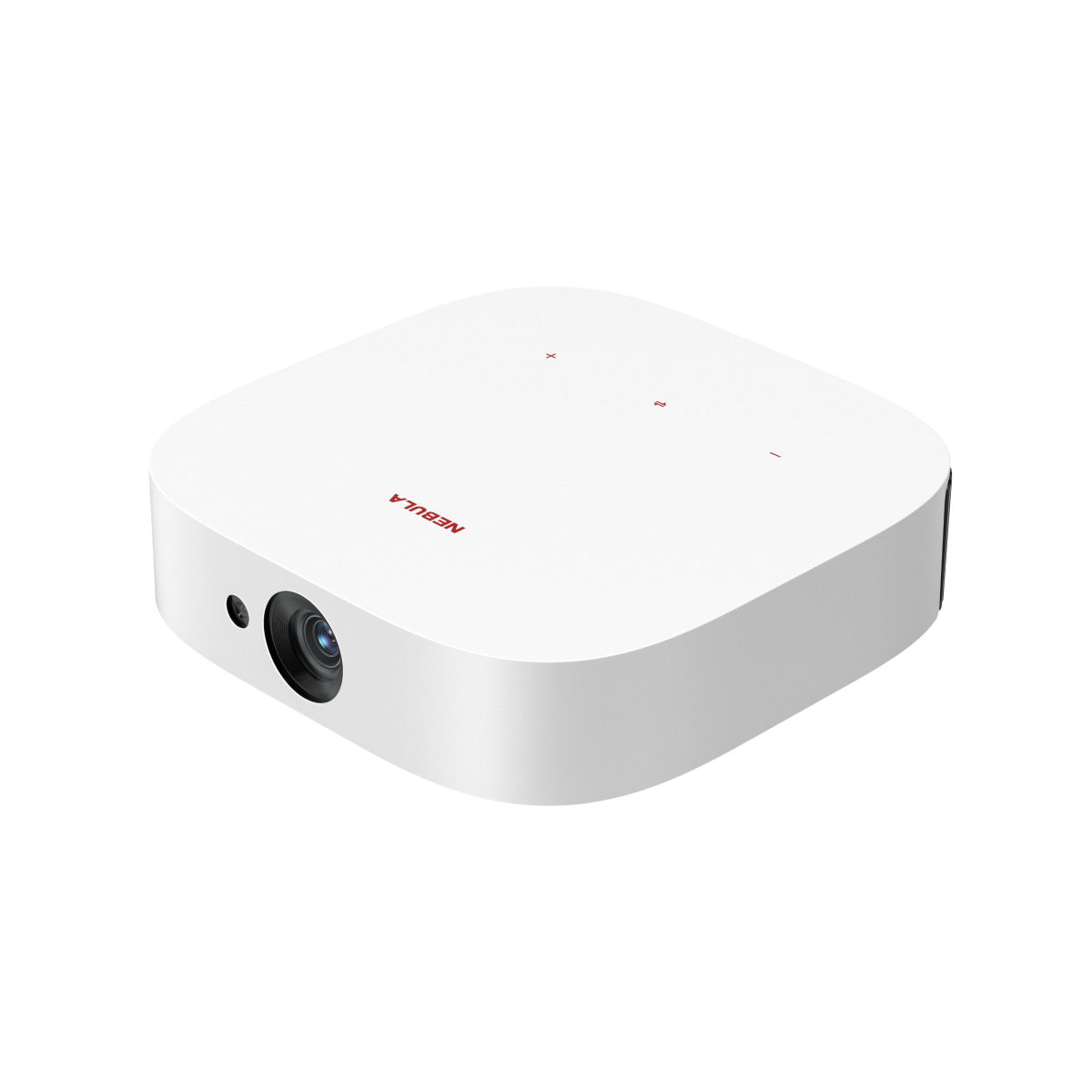In a world increasingly driven by visual content, projectors have become indispensable tools for many applications, from home entertainment and business presentations to education and art exhibitions. One key aspect determining the quality of the image projected is the contrast ratio. But what exactly is it, and why is it integral to a projector's performance?
In this comprehensive guide, we unravel the layers of projector contrast ratio, explore the methodologies to measure it, the ideal levels in diverse settings, and the nuances that distinguish different types of projectors in terms of their contrast performances, empowering you with insights to harness this knowledge in enhancing your visual experiences.
What Is Contrast Ratio?
Contrast ratio is a critical term that often pops up in the discussion of visual display quality, whether it's about televisions, computer monitors, or projectors. It represents the difference in light intensity between the brightest white and the darkest black a display can produce. Specifically, it's calculated by dividing the luminance of the brightest white by that of the darkest black. For instance, a contrast ratio of 1000:1 means that the brightest white is 1000 times brighter than the darkest black.
What Is Contrast Ratio on a Projector?
Now that we understand the basic meaning of contrast ratio, let's explore what is contrast ratio for projectors specifically.
In the context of projectors, the contrast ratio indicates the variance between the brightest and darkest elements a projector can display. It is a crucial indicator of image quality and clarity. A projector boasting a high contrast ratio is capable of delivering deep blacks alongside bright whites, yielding a more vibrant and detailed image. On the flip side, a projector with a lower contrast ratio often renders blacks as muted grays, leading to an image that can appear faded and lack depth, a shortfall that becomes especially noticeable in dark scenes or environments with ambient light.
Why is Contrast Ratio Important for Projectors?
The importance of contrast ratio in projectors can't be overstated as it directly impacts the viewer's visual experience across various scenarios, from entertainment and education to business and art exhibitions.
Home Theaters: In a home theater setting, the contrast ratio of movie projectors is paramount for delivering cinematic-quality images. Scenes with varied lighting or intricate details appear more lifelike, enhancing the overall movie-watching or gaming experience.
Business Presentations: In corporate settings where presentations are a norm, a projector's contrast ratio ensures that all visual data - be it text, charts, or images - is crisp and clear, thereby facilitating effective communication and comprehension.
Educational Institutions: In classrooms and lecture halls, a projector with a strong contrast ratio is essential for displaying educational materials with clarity. Whether it's intricate diagrams, detailed text, or multimedia content, a higher contrast aids in student comprehension and engagement, ensuring that learning materials are visually accessible and effective.
Art and Visual Installations: In scenarios where projectors are used for art exhibitions or visual installations, the contrast ratio is pivotal in ensuring art pieces are displayed with utmost fidelity to the artists' intentions. Rich blacks and luminous whites contribute to the vibrancy and depth of the visual elements, eliciting stronger emotional and aesthetic responses from the audience.
How Do You Measure Projector Contrast Ratios?
There are two primary methods employed to measure the contrast ratio: Full On/Off contrast and ANSI (American National Standards Institute) contrast.
Full On/Off Contrast
Procedure
Measure the brightness of a projector when displaying a fully white screen, and then measure the brightness on a fully black screen. The contrast ratio is obtained by dividing the brightness of the white screen by the brightness of the black screen.
Outcomes
This method can yield high contrast ratios, often reaching the thousands:1 or even millions:1, making it a popular choice for manufacturers to advertise their products.
Drawbacks
Misrepresentation: Despite its simplicity, Full On/Off contrast doesn't reflect real-world viewing conditions since visual content usually contains a mix of bright and dark areas.
Misleading Dynamic Adjustments: Many modern projectors dynamically adjust their light output based on the scene's average light level, which can be done by altering the lamp power or operating an auto iris. This dynamic adjustment can lead to misleading Full On/Off contrast ratings as it measures the black in the projector's darkest setting against the white in its brightest setting. This is what dynamic contrast ratio denotes, a term introduced by some manufacturers, which can further confuse the understanding of contrast ratios.
ANSI Contrast
Procedure
Utilize a checkerboard pattern consisting of 16 rectangles, with eight being white and eight being black. Measure and average the brightness values of the white and black squares separately, then calculate the ratio of the averaged white readings to the black readings to determine the ANSI contrast ratio.
Outcomes
The ANSI contrast ratio typically ranges around hundreds:1, offering a more realistic depiction of a projector's performance under normal viewing conditions.
Drawbacks
Although more accurate, the ANSI contrast method is more complex and time-consuming, as each rectangle needs to be measured separately. External factors like reflected light can also affect the accuracy of the measurements.
What Is a Good Contrast Ratio for a Projector?
Determining a good contrast ratio for a projector depends on the specific use case, environmental conditions, and the type of content being displayed. Let's delve into the optimal contrast ratios suited for different scenarios:
Home Theater
In the cozy, subdued lighting of a home theater, every detail, shadow, and color gradient plays a pivotal role in crafting an immersive cinematic experience. The sweet spot begins at 1,500:1 to 2,000:1, but for those looking to elevate their viewing experience, seeking out home projector models boasting contrast ratios of over 10,000:1 can yield remarkable results.
Business and Educational Settings
These environments often have ambient light, and the focus is on the clear visibility of text and graphical data rather than cinematic visuals. Therefore, a spectrum from 500:1 to 2,000:1 is often sufficient, balancing clarity and cost-effectiveness.
Outdoor
Mother Nature, with her unpredictable lighting moods, poses unique challenges to outdoor projection scenarios. Be it a backyard movie night or an open-air exhibition, the radiant sun or the subtle moonlight can influence the visual output. Though there is no fixed standard, venturing towards a portable projector with a higher ratio promises enhanced visibility amidst ambient light.
Which One Has a Better Contrast: DLP Projector vs. LCD Projector?
Beyond just the numbers, the underlying technology of the projector greatly influences its contrast capabilities. Let's dive into the intricacies of two prevalent projection technologies - DLP and LCD - to see how their contrast performances compare.
DLP (Digital Light Processing) Projectors
How They Work: Utilizes thousands of tiny mirrors (micro-mirrors) that reflect light and a color wheel to create images.
Contrast Strength: Typically excel in contrast due to their ability to produce deeper blacks. The micro-mirrors can tilt to block light entirely, ensuring dark scenes are rendered with depth.
Contrast Performance:
DLP projectors are renowned for their excellent contrast ratios and a portable projector. They excel in rendering deep blacks and bright whites, creating images with exceptional detail and vividness. This makes them a top choice for home theaters and scenarios where high contrast is crucial.
Image Quality:
DLP projectors often produce sharp and crisp images with minimal pixelation, enhancing the overall viewing experience. They are particularly well-suited for applications where image quality is paramount.
Response Time:
DLP projectors have fast response times, making them ideal for gaming and fast-motion content without noticeable motion blur.
Rainbow Effect:
Some people may experience a "rainbow effect" when viewing DLP projectors, characterized by brief flashes of rainbow-like colors. This effect is more noticeable in single-chip DLP projectors.
LCD (Liquid Crystal Display) Projectors
How They Work: Utilizes liquid crystal panels that allow light to pass or block it to create images.
Contrast Strength: Often display slightly lighter blacks since the liquid crystals, even in their off state, can't block out all light completely. This results in a modestly lower contrast ratio compared to DLPs.
Contrast Performance:
LCD projectors generally offer good contrast ratios, though they might not match the exceptional contrast of DLP projectors. However, they provide quality contrast for various applications, including business presentations and acts as a home projector.
Color Accuracy:
LCD projectors are known for their accurate color reproduction, making them suitable for situations where color fidelity is essential, such as graphic design or medical imaging.
No Rainbow Effect:
Unlike some DLP projectors, LCD projectors do not produce the rainbow effect, which can be a significant advantage for those sensitive to this phenomenon.
LED (Light Emitting Diode) Projectors:
Brightness:
LED projectors are celebrated for their brightness, making them an excellent choice for well-lit environments or outdoor use. They can overcome ambient light challenges.
Contrast Ratio:
While LED projectors offer good brightness, their contrast ratios might be limited compared to DLP projectors, which can affect the depth of blacks and overall image quality.
Durability:
LEDs have a longer lifespan compared to traditional projector lamps, providing a low-maintenance and cost-effective solution over time.
Conclusion
As we wrap up this insightful journey into the realm of projector contrast ratios, it becomes evident how this seemingly technical term is profoundly interwoven with our visual experiences. What the contrast ratio of a projector brings to life is the nuanced dance between light and dark, a silent storyteller that amplifies the narrative, emotion, and impact of every image projected. Understanding its nuances, measurements, and implications empowers us to transform ordinary visuals into extraordinary visual experiences, making every projection a confluence of technology and artistry, precision and emotion, clarity and depth.
Frequently Asked Questions about “Projector Contrast Ratio”
Is Higher Contrast Ratio Better for Projectors?
Yes, a higher contrast ratio is generally better for projectors as it indicates the ability to display more vivid and lifelike images with deeper blacks and brighter whites, enhancing image quality.
What External Factors Will Affect Contrast Ratio?
Several external factors can influence the contrast ratio:
- Ambient Light:Bright light can wash out the image and reduce contrast.
- Screen Material:Certain materials can either enhance or diminish contrast levels.
- Viewing Angle:Contrast can vary when viewed from different angles.
- Display Settings:Settings like brightness and gamma can impact contrast.

















